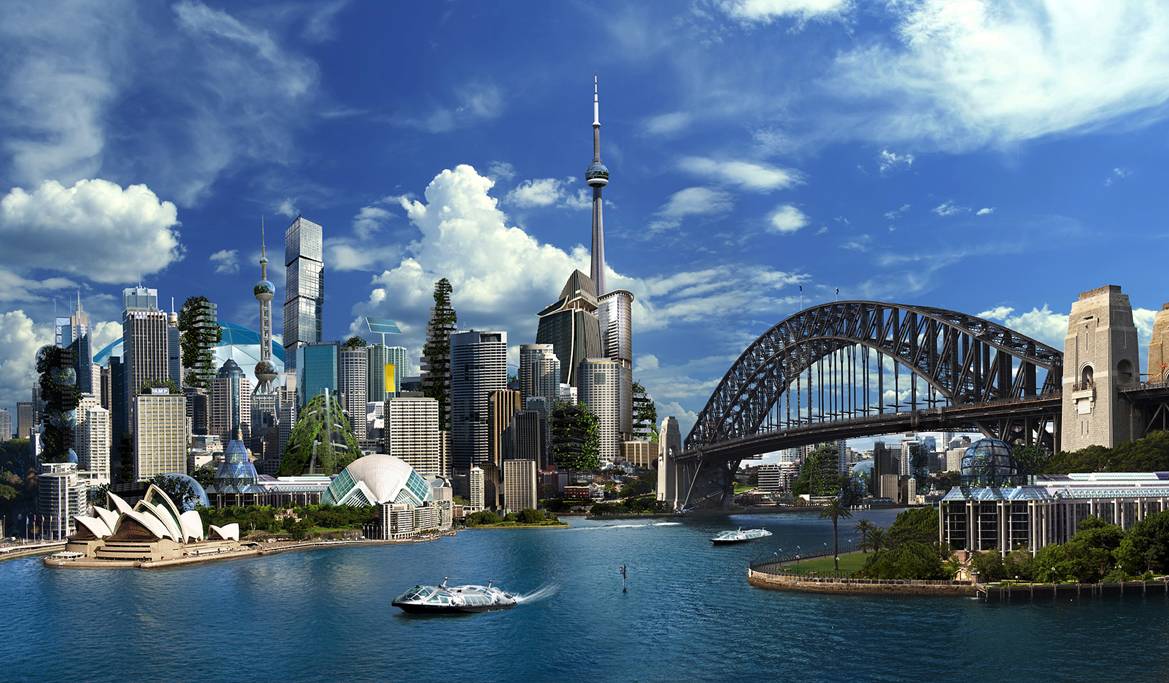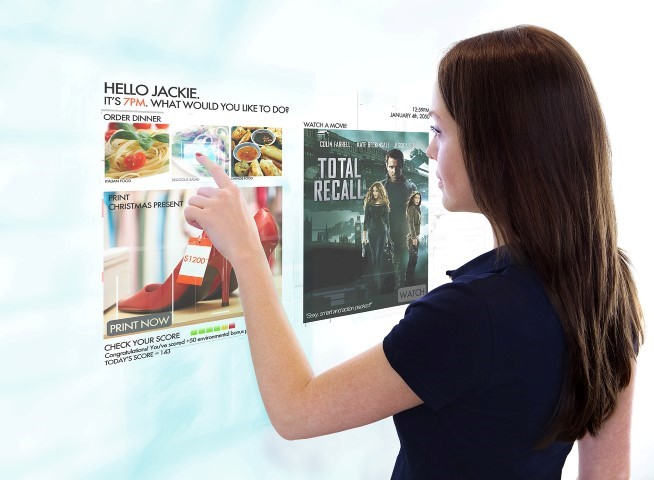Sydney Australia 18th of December 2012 – Ever wondered what the future will look like? Well, Impulse Gamer were given a sneak peek thanks to Right Angle Studio which was inspired by the soon to be released Total Recall film!
Check out the full report below! Agree? Disagree? Let us know!

Australia 2050 Report – A New Reality
About the Report
To mark the release of Total Recall on DVD, Blu-ray and Digital, Universal Sony Pictures Home Entertainment has asked leading trend forecasting company Right Angle Studio to compile a report on what Australia will look like in the future – a key theme within the film.
Despite the dystopian environment portrayed in Total Recall, where a far-in-the-future earth is dominated by two nation-states – United Federation of Britain and The Colony (formerly known as Australia), the report presents a more optimistic view of the future that lies within many people’s lifetime – half way between the DVD release date in 2012 and the film setting – in 2099. The trend lines show that our present life is far better than that of generations past and while we can’t ignore the environmental challenges we face up ahead, we should be excited by the ideas and technology that will enable us to craft amazing cities and lives for ourselves.

To help frame this future, the report is divided into three key themes ranging from the macro to the micro: Future Cities, Future Technology and Future Home. Under each sit a number of ideas that have been developed by Right Angle and are qualified by comments from global thought leaders in companies and organisations such as The Future Laboratory, Google, Arup, The City of Sydney and Tedx Sydney.
Although the report presents a possible future for 2050, it is also a window into what we are already witnessing in 2012. Excitingly, many of these ideas are already in action in one form or another and the exponential rate of innovation means that what once seemed science fiction is fast becoming a reality.
For instance, it is a possibility that the world’s problems could be solved by turning them into games. By providing incentives (such as points and prizes) and integrating games into our routines we can positively shape our destructive daily behaviours. Rather than fear, we can use fun to motivate the masses and find a brave new world where entertainment is not just a way of escaping our problems but also a way of fixing them.
About Right Angle Studio
When it comes to understanding the future our cities, Right Angle Studio occupies a unique position. As publishers of The Thousands City Guides, they have documented Australian cities for over seven years and provide insights to local and global organisations on making places and products better.
The Australia 2050 Report – A New reality
“THE FUTURE WILL BE FUN”
Welcome to the future. It’s the start of the Australian summer of 2050 and these are good times: climate change has been slowed, food security is a non-issue and global conflict is at a minimum. To help solve our problems, mankind turned life into a game. Poverty? Obesity? An ageing population? We’ve got it covered.
The gamification of the world happened when we finally realised that we wouldn’t change our behavior unless we were incentivised. So we used fun rather than fear to motivate the masses and save spaceship earth. In the beginning, this sounded far-fetched to those who viewed games as a waste of time but it was widely embraced by the generation known as “Digital Natives” who found ways to game and hack their way to happiness.
You’ll be pleased to know that here in the future we value entertainment above everything. No longer do we think of it as a way to escape our problems, but a way to fix them. Entertainment is experience. Entertainment is innovation. Entertainment is how we communicate our dreams and it is how we make them real.
| Fact: The number of hours that gamers world-wide have spent playing “World of Warcraft” alone adds up to 5.93 million years. What happens if this time is spent on games that make the world a better place? Jane McGonigal, Gaming can make a better world, TED Talk |
FUTURE CITY
“By the year 2050 we will be deep inside the Asian Century. Sydney will represent a seamless integration of peoples and cultures from across Asia and the rest of the world. It will feel like the centre of Asia Pacific region. Its ocean beaches and waterways will provide a stark counterpoint to the density and richness of its urban environments and streetscapes. Life in balance. The best of all worlds.” – Remo Giuffre, TedxSydney
Smarter Cities
By 2050, Sydney and Melbourne’s populations will be around 7.5 million each. Fortunately, an increase in population density played a vital role in reducing our individual carbon footprints as we now happily share the available spaces and resources. As our cities get larger they also get smarter with time and space saving technologies making daily life a whole lot easier.
Fluid Cities
Transport systems are improved between country and city, and home and work to ensure a smooth flow of the economy – Sydney’s buses are as efficient as Tokyo’s trains. To encourage patronage, public transport tickets are replaced by scorecards, rewarding commuters for taking public transport and reducing traffic congestion.
The Mobile Workforce
The majority of work occurs online, not in the office. Workers have flexitime so that work happens when we want it to. As a result, Sydney will become a major hub for members of a global and mobile workforce of highly tech-literate knowledge-based workers known as “Technomads” who can work when and where they want to. The “weekend” happens when the weather and the waves are good.
Fun is good for us
Lots of activities are made fun through gaming. The mundane chore of cleaning the house can be played against friends and family for points and rewards. This logic is also applied to the scale of the city. People share, propose and participate in other local actions to “better the neighbourhood”, such as locating vacant lots to put to use or pooling money and ideas for local start-ups. Being a better citizen is a game to gather credits, which can be used to offset council taxes.
FUTURE TECHNOLOGY
“The smart phone principle will still be relevant in terms of it being at the centre of our personal digital world but the physical device will change considerably because technology will allow it to become essentially invisible. For example, today the device needs to be designed around a rigid screen, whereas in the future the device will be able to be designed around us, taking advantage of flexible screen and/or remote screen technology. This will flip on its head what future devices will feel and look like. Could any surface, anywhere become the screen or interface for our personal digital world?” Paul Colley, Group Manager, Network Services and Technology, SONY Australia
Internet of Things
In 2050 the entire city, in fact almost everything in the entire world can be placed into the internet. There is nothing without GPS coordinates. Street corners, humans and objects are all embedded with chips which makes all things locatable, collectible, playable. All of this embedded information will improve our interaction with the world around us: while passing a tree in a park, it may tell you it needs more water. Fulfilling this request will bring about a reward.
The World is a Screen
Technology will become invisible, which permits every surface to become tactile, from the bus window to the cafe tabletop. This will allow people to travel light: no one carries laptops, tablets or smart phones. They just tap in to play.
Goodbye Smartphone
The desire to make technology disappear will ensure the demise of the smartphone, but the principle of it as the interface between ourselves and the digital world remains. The must-have gizmos in 2050 are contact lenses: they allow for an augmented reality where applications pop up and menus scroll from the corner of the eye. It means that accessing an app can happen discretely: you can check emails in a meeting with no one “seeing” but yourself.
Feedback Loops
Contact lenses become a popular mode to embed technology. A popular add-on is the personal recorder where one can capture and playback their life. While going over an argument with a loved one in playback may be difficult, at least you can learn from your mistakes, or know exactly what is said in the heat of the moment. You can also erase people from your archive if it all becomes too much.
Syncing not Thinking
Our daily decisions become easier because choices are calculated and delivered in real time to the brain. Preparing for the journey to work is seamless because the route is mapped with all possible delays calculated and personal preferences added on. On the way, your favourite coffee is ordered in advance when you are five minutes from the local cafe. Baristas are tipped to keep on time with your schedule.
FUTURE HOME
“We are always being told to listen to our bodies, but in the future we will listen our body’s data, and to the data of the objects around us. It’s as simple as expecting cups to tell you the temperature of the coffee, or the place where you normally put your keys showing you where you actually left your keys with an arrow and “your keys are 5 meters that-a-way.” Think of anything that it is useful to know and imagine a softer, more helpful way to experience that information.” Tom Uglow, Creative Director, Google Sydney
Print on Demand
The refinement of 3D printing in the home reduces the demand for personal possessions because essential goods can be printed on demand and even recycled after use. This means that a minor fashion crisis can be averted. A night at the Opera House? Print out a tuxedo. No thongs allowed in the club? Print out some shoes.
House Swap
The on-demand printing of possessions means that the need for household storage will reduce, which in turn compresses the average apartment size. The lack of physical possessions permits people to move apartment every six months or so in order to experiment with new neighbourhoods and housemates. House swapping becomes a popular pastime.
Projection Walls
Any available wall surface will have the potential to screen entertainment. Within the home, social media streams, television content and video phone calls confluence on the walls; therefore, interior architecture reverts to a clean, white and minimal style. On the exterior, facades also project moving images. A popular pastime will be to use the facade as an emoticon: a strong yellow glow of a facade signals a happy house.
Immersive Entertainment
Watching film and television will no longer be a passive activity. Viewers will be immersed in the content; a film will become a “choose your own adventure” of sorts. You can also play with strangers or friends and earn points for steering plots or winning accolades for an outstanding performance. Immersive entertainment will make you your own biggest celebrity – and fan.
The Disconnect Button
In a world that is totally connected, the act of disconnection will become a regular habit, like yoga or pilates. Any room in the house can be turned into a digital-free black box through the swipe of a switch. There will be no outside communication: conversations become private, thoughts are independent, there are no interruptions. It will be the ultimate refresh.


